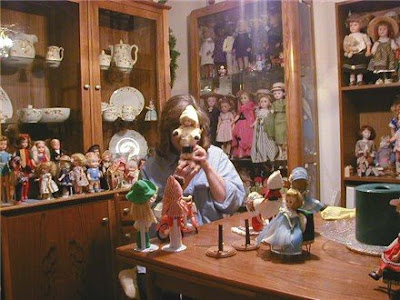
Didn't get as much reading done today as I would have liked. It was a good day for it – really still a bit too cold to want to be outside for very long, but not depressingly gray or anything. And we didn't have a full day's supply of errands to run, so there was plenty of time to devote to curling up with a good book.
My problem was staying awake. I was groggy this morning from being up late on Saturday night, reading. So I've found myself taking little involuntary naps all day long. Fortunately, M did the driving when we were out and about today – kept us from ending up being another Beltway statistic.
The book that had me up so late, and the one I've been finishing up today was/is Susan Cooper's young adult fantasy novel,
Over Sea, Under Stone. It's the first book in her series
The Dark Is Rising (named for the second novel in the series), and it's a ripping good yarn about three kids who have to save the world from the forces of evil – and about which I'll have more to report in a day or so. I've really enjoyed the book; but even though I've been intrigued by it for years now, I probably wouldn't have read it if I hadn't signed up for the
Once Upon a Time II reading challenge.
Internet reading challenges have been a pleasant discovery for me recently. I was skeptical at first – well, I had doubts that simply joining a group would make any difference in my reading habits. Or
non-reading habits, I probably should say. Because after a lifetime of being a terrible bookworm, I had recently almost stopped reading completely. Well, I read magazines and the Internet. But no books. As I've said before somewhere on this blog, in 2006 I read fewer than a dozen books. And the year before that, I'm not sure I read any books at all. Quite a come-down for someone who used to read at least a hundred books a year. (I know that's not an exaggeration – I have lists!)
Also, I'd begun to realize how little I was getting out of the reading that I
was doing. I used to read quite a lot on the way to/from my job in the District of Columbia. I had a relatively long commute – about an hour and a half each morning and each evening. So I had time to read, if I could stay awake to do it. And going through our books during some recent re-shelving, I've found many books that I read during that period. I know I've read them because the pages are frequently dog-eared (OK, I know that's a no-no), and they all have an expired Metro pass stuck in them somewhere as a bookmark. But, except for a very few, if I had to come up with a summary of any one of them, I'd be embarrassingly hard-pressed.
Well, obviously something had to be done. And I think the reading challenges are getting me back on track. They seem to be encouraging me to keep reading, when I normally might be surfing the net or anesthetizing my brain with TV's vast wasteland. And writing reviews of the books is (I hope) helping me retain what I read, and forcing me to think a bit more deeply about the books as I read them.
I know there's really no reason it should make such a difference. But somehow just making those lists of books to read for the challenges, and then posting them on my blog gives me just the little push I needed.
And seeing the enormous number of books read and reviewed by other challenge participants gives me another little nudge. It's also making me think I shouldn't have been so skeptical of those Evelyn Wood speed-reading lessons everybody was taking back in the '60s.
So now I just need to get busy and write up a few reviews, and then start another book!
Link:
The Sunday Salon.














